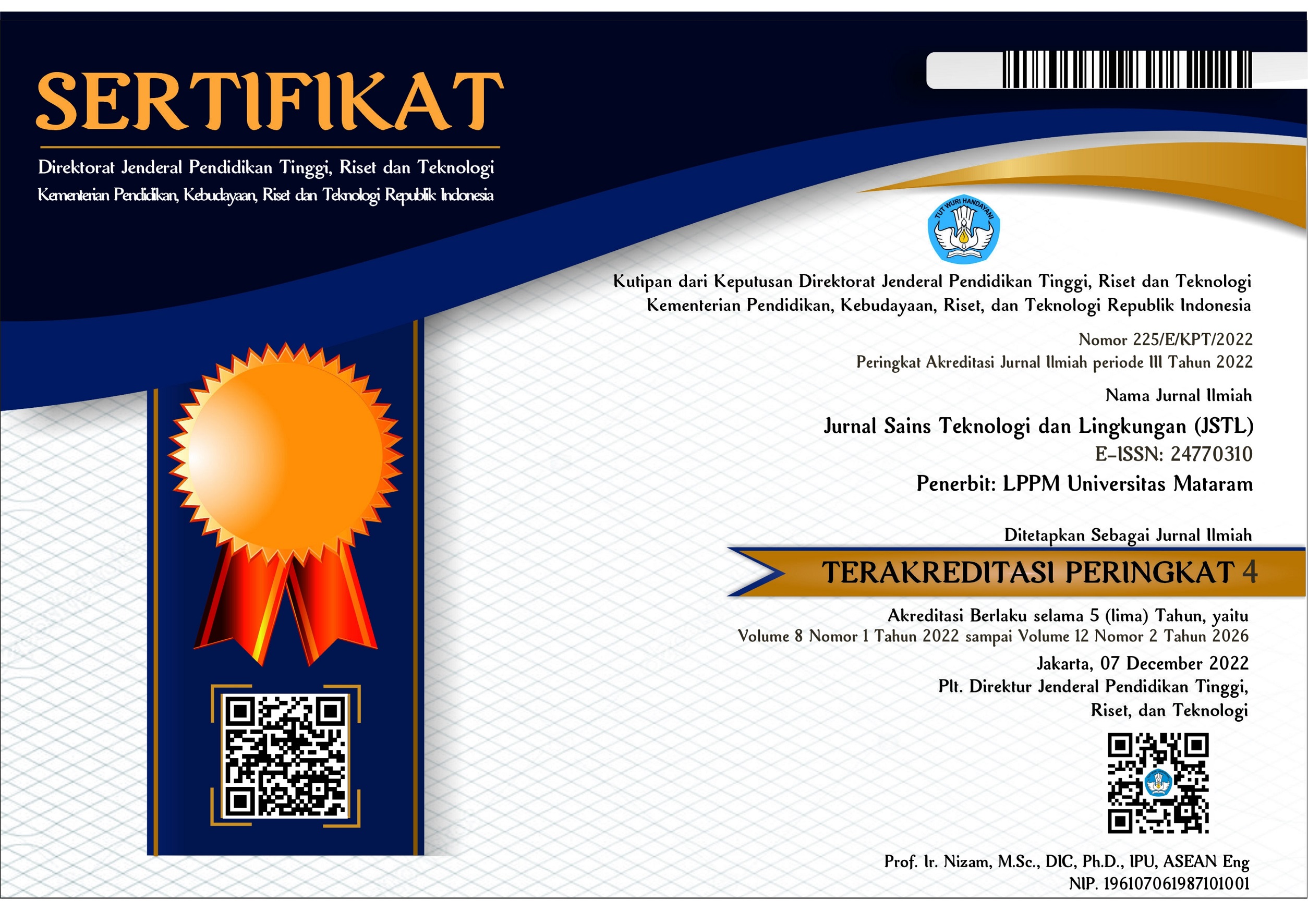Identifikasi Sifat, Ciri, dan Jenis Tanah Utama di Pulau Lombok
DOI:
https://doi.org/10.29303/jstl.v5i1.102Keywords:
Orthents, Fluvents, Undepts, Underts, UdalfsAbstract
TA descriptive research aimed to identify the characteristics and name of main soils in Lombok Island was carried out through field observation for soil profiles and landform and laboratory analyses for soil physical and chemical properties. The type or name of soil was defined by using The National (Indonesian) Soil Classification System (2014), Soil Taxonomy (SSS-USDA, 2014), and World Soil Reference (FAO, 2014). There were 4 main types of soil in Lombok Island, which were Litosol, Aluvial, Kambisol, and Vertisol; and a fairly developed soil in limited spots was Mediteran. Based on the soil taxonomy system, those soils were respectively equivalent to Orthents, Fluvents, Undepts, Underts, and Udalfs; whereas based on the soil system of FAO, were Leptisols, Fluvisols, Cambisols, Vertisols, and Luvisols. The main characteristics of Litosol/Orthents/Leptosols Lombok were shallow solum (< 25 cm on the rocks or lithic contacts), coarse textured (sandy), nutritionally deficient, very low CEC (< 5 cmolc.kg-) and C-organic content (< 1 %). Aluvial or Fluvents, were mainly utilized as paddy soil, consisting of several layers which it clay and C-organic content were changed irregularly with depth, CEC of top soil (Ap) was medium (5–10 cmolc.kg-), and it was relatively fertile. Kambisols or Undepts was fairly deep (consisting of 40 – 60 cm of A and B horizons,), loamy textured, fairly fertile, CEC was medium, and C-organic content was low – medium (1–2 %). Vertisol or Uderts was characterized by a significant swell-shrinking properties, clay textured, extremely hard to be cultivated, high CEC, Ca, and Mg, and relatively fertile soil. Mediteran or Udalf was a further developed soil (solum > 100 cm), clay translocation has been occurred from upper (E) to lower horizons (Bt), CEC was fair, and it was relatively fertile soil. In conclusion, the pedologic development of soils in Lombok Island was relatively slow due mainly to the low–moderate rainfall, and the soil types were dominated by Litosols, Aluvials, Kambisols, and Vertisols, and Mediteran in small area. In order to provide a complete reference for the characteristics of main soils in Lombok Island, it necessaries to define mineralogy composition through X-ray diffraction analysis (XRD) and thermogravimetry analysis (TGA) of the clay fractions of the soilsDownloads
Published
2019-06-26
Issue
Section
Articles



1.png)











